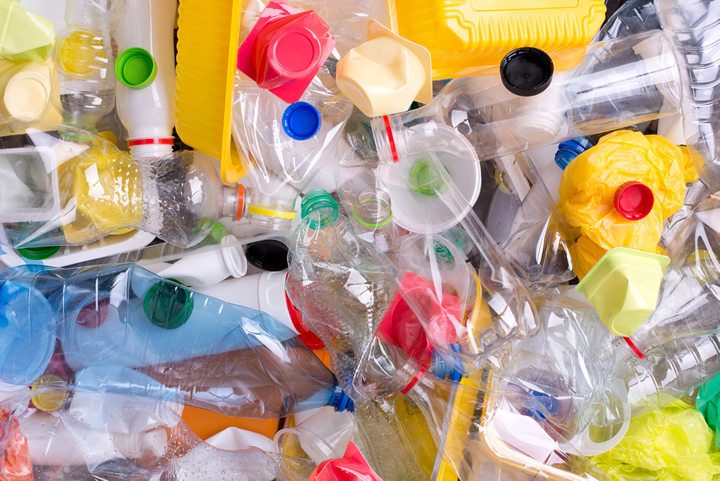NREL Calculates Lost Value of Landfilled Plastic in U.S.

With mountains of plastic waste piling up in landfills and scientists estimating that there will be more plastics by weight than fish in the ocean by 2050, the growing environmental challenge presented to the world by plastics is well understood. What is less well understood by the scientific community is the lost energy opportunity. In short, plastic waste is also energy wasted.
Scientists at the U.S. Department of Energy’s (DOE’s) National Renewable Energy Laboratory (NREL) calculated the energy value of landfilled plastic waste in 2019 was enough to supply 5% of the power used by the country’s transportation sector, or 5.5% by the industrial sector.
They also provided a look at how much plastic waste has been deposited in landfills, on a regional, state, and county level, and the problem is bigger than previously believed. NREL estimates the amount of plastic waste in the United States is 44 million metric tons. Using a slightly different methodology, the U.S. Environmental Protection Agency puts the figure at 32.2 million metric tons.
“For us to tackle plastic waste pollution, we really need to understand better where those resources are,” said Anelia Milbrandt, a senior research analyst at NREL and co-author of a new paper, “Quantification and evaluation of plastic waste in the United States,” published in the journal Resources, Conservation & Recycling. “We would like to bring awareness to communities about the potential for these materials.”
Her NREL co-authors are Kamyria Coney, Alex Badgett, and Gregg Beckham. A senior research fellow, Beckham heads the BOTTLE Consortium, a collaborative launched last year in an effort to address the waste-plastics problem.
By identifying areas with large quantities of plastic waste, the scientists are hoping to highlight the economic opportunities that could arise by recovering their value through different processes. Only about 5% of the waste plastic in the United States was recycled in 2019, while 86% was left in landfills. The rest was burned to generate electricity.
NREL’s analysis of the discarded plastics examined seven materials—variously used to make bottles, CDs, milk jugs, take-out containers, and bags, among other items. Communities across the country spent about $2.3 billion on plastic waste disposal in 2019.
The researchers noted the amount of landfilled plastic waste in the United States has been increasing because of several factors, including low recycling rates, population growth, consumer preference for single-use plastics, and low disposal fees in certain parts of the country. The problem has been exacerbated by China’s refusal beginning in 2017 to import nonindustrial plastic waste from the United States.
Developing new recycling techniques for plastics would create incentives for a circular economy, where what once was discarded would be reused instead of virgin plastics. The market value of landfilled plastic ranges from $4.5 billion to $9.9 billion, or $7.2 billion on average, the researchers estimated. The embodied energy in the waste plastic—an indicator of how much energy it took to manufacture the materials—equates to about 12% of the country’s energy consumption by the industrial sector.
Some types of plastic are separated and recycled, chiefly polyethylene terephthalate (commonly known as PET), used to make soda bottles; and high-density polyethylene, used for milk jugs and shampoo bottles, and these represent the smallest percentage of plastics found in landfills.
The filmy plastic used for bags is among the most prevalent type found in landfills.
The researchers pointed out two possible solutions for the plastics not being recycled: Develop new products that rely on these plastics to encourage their sorting and collection, and develop advanced sorting technologies that could eventually lead to increased use of recycled materials.
“I'm hoping this paper also increases awareness for industry and investors to look for opportunities,” Milbrandt said.
The amount of plastic waste correlates with population size. California, Texas, and Florida are the three most populous states and also have the largest amount of landfilled plastic waste. New York, however, is fourth for population, but it ships much of its waste outside of the state.
“Plastic waste is not just an environmental issue. It’s a waste management issue. It’s also a land use issue because landfills are closing in many areas,” Milbrandt said. “What do we do with all that waste? It has to go somewhere. I believe local governments and industry developers will see a benefit of this report by providing them information to support decisions.”
DOE’s Bioenergy Technologies Office funded the research.
NREL is the U.S. Department of Energy's primary national laboratory for renewable energy and energy efficiency research and development. NREL is operated for the Energy Department by the Alliance for Sustainable Energy, LLC.
Comments (0)
This post does not have any comments. Be the first to leave a comment below.
Featured Product

